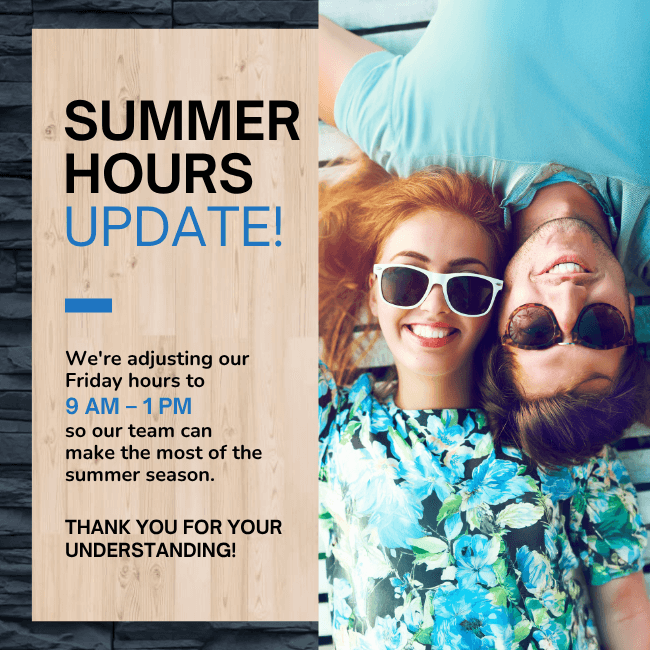As our eyes age, we may find it harder to focus on objects at varying distances—whether it’s reading a book, looking at a computer screen, or driving. This shift often leads to the need for multifocal vision correction. That’s where an eye exam and a progressive lenses prescription come in.
Progressive lenses are multifocal lenses that offer a gradual transition between different prescriptions for near, intermediate, and distance vision—all in a single, line-free lens. Unlike traditional bifocals or trifocals, progressive lenses have no visible segments, allowing for smoother vision and a more modern, seamless look.
Progressives are designed to mimic the way your eyes naturally shift focus, offering a comfortable and convenient way to see clearly at every distance.
How Do Progressive Glasses Work?
Progressive lenses are carefully designed to mimic how your eyes would naturally change focus—without needing to switch glasses.
The top of the lens supports distance vision, the middle helps with intermediate focus, and the bottom is designed for reading or other close-up work. These zones are blended together to allow a smooth transition from one distance to another, helping your eyes adapt easily throughout the day.
What Makes Progressive Glasses Unique?
Progressive lenses combine three prescriptions in one lens: one for seeing things up close, one for mid-range activities like using a computer, and one for distance vision. Unlike bifocals or trifocals, progressives do not have hard lines separating the different viewing areas.
This seamless transition between vision zones allows your eyes to move naturally through your day. Whether you’re reading a book, walking down the street, or looking at a screen, progressives offer an uninterrupted viewing experience.
Understanding the Visual Zones
Each visual zone in a progressive lens is designed to help you with different daily tasks. However, unlike lenses with sharp transitions, progressives provide a smooth shift between activities.
This means you won’t experience a visual “jump” when you change your focus. Instead, you’ll enjoy more fluid, natural vision that supports activities that range from driving to scrolling on your phone.
Who Should Consider Progressive Glasses?
Progressive lenses are a smart, all-in-one solution for many types of eyewear needs—especially for those experiencing age-related vision changes or juggling multiple pairs of glasses.
You may want to consider progressive lenses if you:
- Are over 40 and developing presbyopia: This common, age-related condition makes it harder to see things up close. Progressives help manage this shift naturally.
- Use multiple pairs of glasses: If you’re constantly switching between reading, computer, and distance glasses, progressives offer a convenient alternative.
- Prefer a modern, line-free look: Progressive lenses do not have visible segments, which gives them a sleeker appearance than bifocals or trifocals.
- Lead an active lifestyle: If your day involves frequent transitions between tasks—like reading, working, and driving—progressives provide continuous support at all distances.
- Value visual comfort and simplicity: One pair of progressive glasses can streamline your routine while offering a smoother, more natural vision experience.
Benefits of Progressive Glasses
Progressive glasses combine convenience and versatility, making them one of the most popular vision solutions available today. They offer clear sight at multiple distances, all in one stylish lens.
Here are some of the key advantages of progressive lenses:
- All-in-one convenience: One pair of glasses corrects near, intermediate, and distance vision.
- Natural transitions: The gradual shift between lens powers mimics your eyes’ natural movements, reducing eye strain.
- Modern look: No visible lines means a sleeker, more youthful appearance compared to traditional bifocals.
- Better visual experience: Smooth transitions between visual zones make daily tasks like reading, driving, and using digital devices easier.

Potential Challenges with Progressives
While most wearers adapt quickly to progressive lenses, some people do experience an adjustment period. It may take time to learn how to position your head and eyes to find the right viewing zone.
In rare cases, some wearers may feel slight dizziness or distortion at the edges of their vision. These symptoms usually go away within a few days or weeks of regular use.
Tips for a Smooth Transition
To help with the adjustment, it’s important to wear your new progressive glasses consistently. Avoid switching back and forth between old and new glasses, as this can make adaptation more difficult.
Your optician can also make fine adjustments to your frames to ensure they sit at the right angle and height for your visual needs. A proper fit can make all the difference.
The Importance of a Proper Fitting
Progressive lenses must be fitted precisely to ensure performance. That’s why it’s important to work with an experienced optical team when selecting your frames and lenses.
Your optometrist or optician will take custom measurements, including the distance between your pupils and the height of your eyes. These details affect how well the visual zones of your lenses will align with your natural gaze.
Digital Measurements Enhance Precision
Many optical clinics now use digital tools to enhance lens fitting accuracy. This allows for exact positioning of the progressive zones, improving both clarity and comfort.
When properly fitted, progressive lenses can dramatically improve your visual experience without the limitations of traditional bifocals or reading glasses.
Are Progressive Glasses Right for You?
Choosing the right glasses depends on your lifestyle, visual needs, and comfort preferences. Progressive lenses offer a great all-in-one solution for anyone dealing with presbyopia or managing multiple pairs of glasses.
If you’re not sure whether progressives are right for you, a conversation with your optometrist can help. They will assess your vision, ask about your daily activities, and recommend the best option for your needs.
Find the Right Fit at Niagara Vision
At Niagara Vision in Niagara Falls, ON, we’re committed to helping you find the eyewear that fits your lifestyle, supports your vision, and reflects your personal style. Our team will guide you through the process of selecting and adjusting to progressive lenses, ensuring you get the clarity and confidence you deserve.
If you’re ready to simplify your vision care with progressive glasses, book an appointment today and let us help you see life clearly at every distance.








